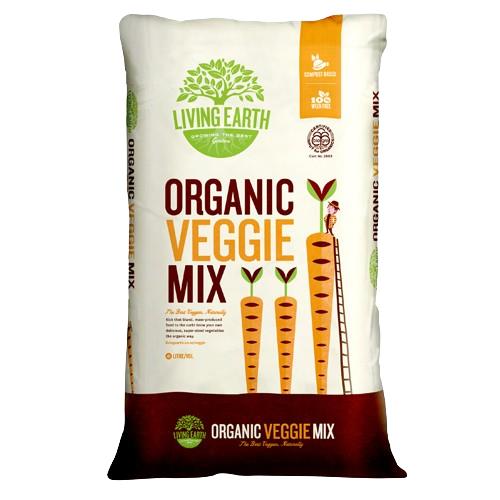The taste of freshly picked homegrown peas warrants them to be in everyone's veggie patch. Try some in a pasta with bacon or in a salad or simply pureed, either way they will give you a burst of sweet goodness.
Planting Calendar
Peas are best grown in winter and early spring.
Harvest In
55-65 Days
Pick regularly to encourage more flowers and pods. The lower pods ripen first so make sure you look for them under the leaves.
Prepare
Position
Peas like to be grown in a sunny spot with plenty of air movement. If space is an issue, grow climbing varieties up tepees, fences or trellis as they can reach 2m.
Soil
When planted into the ground peas like a free draining soil that is rich in organic matter. To improve the organic content in your soil, break up the soil and add Kings Compost, Kings Sheep Pellets along with some Nature's Organic fertiliser then mix together well. When growing in containers, plant into Living Earth Organic Vegetable Mix with Saturaid added to assist with dispersing water down to the roots.
Plant
Peas can be sown directly into the garden, raised beds or containers that are at least 30cm deep. Or sown into a seed tray with organic seed raising mix and transplanted out once they have developed their second set of leaves. Seeds should be planted 2.5 cm deep and spaced 5cm apart. Gently remove the seedling from the tray and plant into the vegetable garden. Take care when transplanting so that the young soft roots are not damaged. Gently firm the soil down after planting and water in well with Aquaticus Garden Booster, this will help the seedlings settle in.
Care
Beginner Tip
Don't forget to throw your pea shells into the compost as they will add essential nutrients as it composts down.
Expert Tip
After the crop has finished dig the plants into the soil as they are rich in nitrogen and will return it back to the soil as it breaks down.
Top Varieties
Frequently Asked Questions
How do I plant peas?
Peas can be sown directly into the garden, raised beds or containers that are at least 30cm deep. Or sown into a seed tray with organic seed raising mix and transplanted out once they have developed their second set of leaves. Seeds should be planted 2.5 cm deep and spaced 5cm apart.
When is the best time to plant peas?
The best time to plant peas is in early spring (August to September) or late summer (February to March).
How often should I water peas?
Water peas regularly, especially during dry periods. Keep the soil evenly moist but not waterlogged.
Can I grow peas in containers?
Peas can be grown in containers. Choose a large pot with good drainage and provide support for the vines.
When are peas ready to harvest?
Pick regularly to encourage more flowers and pods. The lower pods ripen first so make sure you look for them under the leaves.









